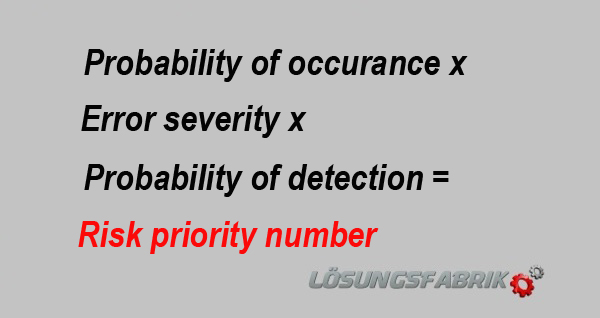Risk priority number (RPN)
The term “risk priority number” is used again and again in conjunction with the risk-based approach included in the ISO 13485. I want to explain what the risk priority number (short: RPN) is in this blog entry.
The risk priority number is calculated as follows:
Probability of occurrence x error severity x probability of detection = risk priority number
All factors are assigned a number between 1 and 10. The results for the RPN can then be between 1 and 1000. A risk priority number of 1 means an extremely improbable error with minimal impact and whose probability of detection previous to shipment is very high. A risk priority number of 1000 means an extremely probable error with serious consequences, whose probability of detection previous to shipment is very low.
Probability of occurrence
The first factor for determining the risk priority number is the error’s probability of occurrence. Here you assign a factor between 1 and 10, where 1 as the lowest number means that the error’s probability of occurrence is extremely low and 10 that it’s an error that can occur frequently resp. where the probability of occurrence is very high.
Error severity
The second factor is the error severity, resp. the impact of the error. The question here should be – how great are the consequences for the patients. If the error has no consequences for the patients, it can be assigned the lowest factor. If it’s an error with serious consequences, then the biggest factor of 10 has to be assigned, or accordingly the intermediate numbers.
Probability of detection
As a third factor for determining the risk priority number we turn to the probability of occurrence. How probable is it that the error is detected during a checkup previous to shipment? If this is very likely, then assign the factor 1. If it’s highly unlikely, assign factor 10.
Risk priority number
From these 3 factors, the risk priority number is calculated. It can range from 1 and 1000 as described above.
If you calculate this for different errors, you then basically already have a to-do list to work through. You should start with possible errors with the highest priority number, because these are the mistakes with the highest possibility of occurring, the biggest negative impact on the patients and whose probability of detection is the lowest.

